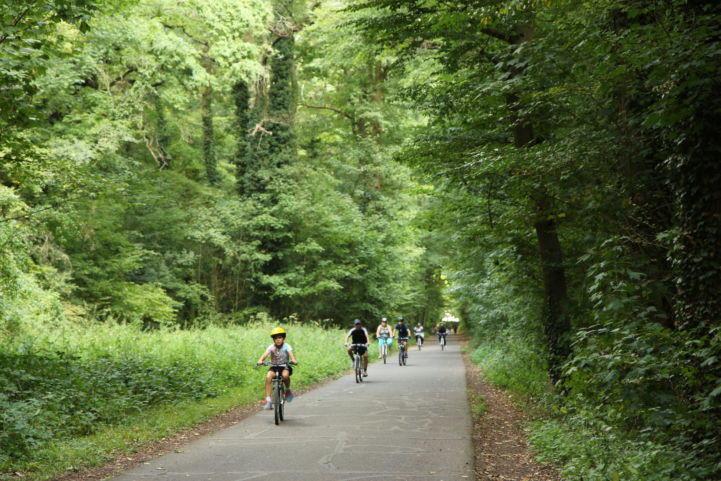Are gravel cycle routes more ecological? - A comparison of paved and gravel cycle path surfaces in near-natural areas
A common assumption is that construction, use and maintenance of cycle paths can have an impact on soil conditions. Paved surfaces are said to have a negative effect on soil by influencing its compaction and water content. However, a study executed by the Ministry of Transport, Building and Regional Development of Mecklenburg-Western Pomerania in Germany, came to a different conclusion. After analyzing the influence of different types of cycle path surfaces on the water and structure of various soil types, it was concluded that paved surfaces (asphalt and concrete) are ecologically more justifiable than gravel or dirt in natural areas.
Reducing the impact of cycling in natural areas with paved cycle paths
The detriment to soil structure as a consequence of the compaction effect frequent bicycle traffic has on gravel surfaces, is very often underestimated. The constant forces of the rubber wheels generate a layer of compaction that is impermeable to water and results in an uneven distribution of water under the cycle path. It influences the absorption capacity of soils and therefore increases surface erosion. In comparison, no negative change in the water balance and no sealing effect could be derived from all soil sites under paved surfaces. Often the natural water content is even above that of the terrain, particularly at marl sites (soils consisting of clays and silts). In both cases, rainwater drains away to the side of the paths and is subsequently used for groundwater recharge.
When talking about the “ideal” cycle path surface, the condition of the cycle path is more important than the surface itself. Gravel cycle paths are often not as resistant and durable as paved cycle paths to different weather conditions, erosion, and heavy agricultural vehicles, which lead to potholes and gullies in the surface. Therefore, more frequent, and consequently costly maintenance is needed, offsetting the initial cost saving of the cycle path construction. Paved surfaces, in contrast, offer greater resilience and can be easily cleared of fallen branches or snow.
There is no standard cycle path that suits for all environments, design the best surface for each case
Other arguments pleading for the constructions of unbound cycling paths include being more attractive or not heating up in hot temperatures. However, these arguments can be countered. The heating of asphalted cycle paths can be nowadays counteracted by mixing asphalt with light-coloured granulate or gravel. This also results in a more natural looking cycle path for better blending into the surrounding landscape. Furthermore, asphalt and concrete provide better cycling safety and comfort for the cyclist as coarse gravel can lead to sliding and even damage bicycle wheels.
In general, the criticism of paved cycle path surfaces in near-natural areas is not justified by evidence. Even if the paved surface slightly changes the landscape, higher comfort of cycling can encourage people to visit the area by bike instead of by car and thereby contribute significantly to its preservation.

- Sources: